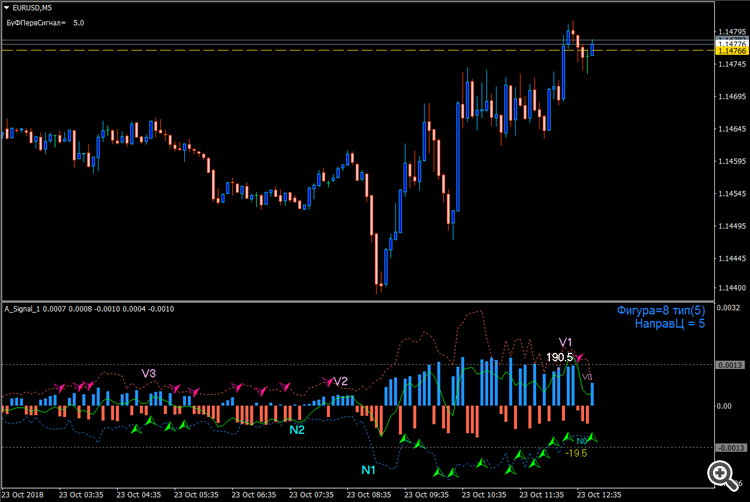You are missing trading opportunities:
- Free trading apps
- Over 8,000 signals for copying
- Economic news for exploring financial markets
Registration
Log in
You agree to website policy and terms of use
If you do not have an account, please register
Where is the proverbial T parameter here?
and can be interpreted in different ways.You don't want to see the letter t in the picture, don't. Can't point out the error, don't do it. Moving on to the conclusions. Of your two wishes.
- First you remember the definition of mathematical expectation.
- And then figure out what the limit of a linear function is.
Both. As a result, your thesis
"Bottom line: it's either an error, or it's not the mathematical expectation in its classical definition, but something else."
refuted. Calculation of the expectation for a model with linear time additive is quite consistent with the classical definition of expectation.
P.S. And in the example with the Cauchy distribution, of course, near x0 the integral in the Riemann sense diverges and the expectation in the classical, commonly used definition does not exist. Which contradicts the presence of apparent growth of the probability density function in the middle. If we extend the definition of the integral for its workability in the case of unbounded functions (as, for example, it is done in non-integer integrals) by considering singular integration, or integral in the sense of the principal value, then the Cauchy distribution has expectation.
You don't want to see the letter t in the picture - don't. Can't point out the error - don't. Moving on to the conclusions. Of your two wishes.
- First you remember the definition of the mathematical expectation.
- And then figure out what the limit of a linear function is.
both are fulfilled. As a result of your thesis.
"Bottom line: it's either an error, or it's not the mathematical expectation in its classical definition, but something else."
refuted. Calculation of the expectation for a model with linear in time addition is quite consistent with the classical definition of expectation.
P.S. And in the example with the Cauchy distribution, of course, near x0 the integral in the sense of Riemann diverges and the expectation in the classical, commonly used definition does not exist. Which contradicts the presence of apparent growth of the probability density function in the middle. If we extend the definition of the integral for its workability in the case of unbounded functions (as, for example, it is done in non-integer integrals) by considering singular integration, or integral in the sense of the principal value, then the Cauchy distribution has expectation.
The t in the picture is not limited. T you introduce is a constraint.
You are looking and do not see it. This is because you do not know the definition of mathematical expectation. Nor do you know what the limit of a linear function is.
The picture I gave you has the answer to those questions, but you didn't see it. It's not about Cauchy -- you're looking in the wrong place.
Let me explain:
.
the limit of a linear function:
.
I hope it's clearer now what I'm talking about.
If you really
Of your two wishes.
- First you would remember the definition of the mathematical expectation.
- And then figure out what the limit of a linear function is.
both are fulfilled.
To complete the picture:
.
Do you see the difference?
But this is a different function with a limit.
This non-linear function even has its own name. It is a saturation function (positive branch).
And this is what it looks like :
.
.
This saturation function is very familiar to technicians.
Especially when the task is to ensure operation in the linear section of the characteristic, and to prohibit exit into the non-linear zone.
.
But econometricians seem to be new to it... well, it's no sin for them... ;)
But physicists simply must know, as this function is very widely used in various sections of physics. And ignorance is also very eloquent... very eloquent...
I experimented with the pair rate and the synthetic exchange rate. Only I did not take a fixed period t for all pairs in the synthetic calculation, for each one there was a different interval.
Logically, the rate at a given deviation should tend to the synthetic rate. But in practice it is the other way round.
I want to see if the ideas from this thread can be put into practice.
I will observe the process to see if it is worth developing further.

The principle of increment and speed change is laid down.I want to see if the ideas in this thread can be put into practice.
I will observe the process to see if it is worth developing further.
The principle of increment and speed change is laid down.What kind of fool are you, Renate, to replace?
https://www.mql5.com/ru/code/9440
What kind of fool are you, Renate, to replace?
https://www.mql5.com/ru/code/9440
You're wearing glasses so you don't get spit in your eyes.)
But you can't see anything through them. I won't exchange one more phrase with you(((
You put on glasses so you don't get spit in your eyes.)
But you can't see anything through them. I'm not exchanging any more words with you(((
He's just never won, that's why he's freaking out.
K2's monitoring isn't great if you ask me...